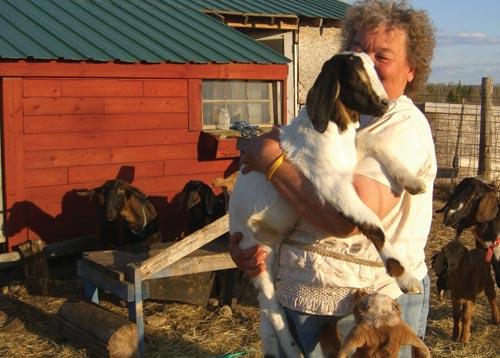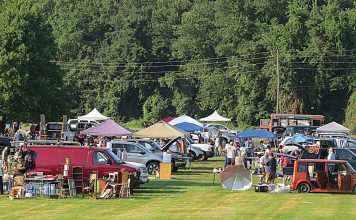 |
|
| Issue #139 • January/February, 2013 |

Here’s a coop we built from pallets and scrap lumber. The goats lived in one end and the chickens lived in the other. It was free and worked well.
While the popular “chicken tractor” with its portable small coop and wire run is very useful for temporary housing during the nicer months of the year, in cold climates you really need a more substantial coop that won’t get buried in snow or blown around in blizzards.
A chicken coop is a wonderful first building project as it’s small and has minimal construction “needs.” A chicken coop can be just as beautiful and fancy as the builder wants it to be. I’ve seen coops I’d live in: pretty and cottage-like, fanciful gnome homes, practical, no-frills simple buildings, and more than a few that are like ours built from scrap.
No matter what your chicken coop will look like, there are several “musts.” The first is a solid structure that does not leak water or wind. While good ventilation is a must, you do have to make the coop tight enough so drafts don’t blow in on your girls.

This is one of our current chicken coops, made entirely out of scrap. It houses a dozen hens very well.
Four square feet of floor space for each adult chicken is recommended. That means your 10×12-foot coop will allow you to house 30 chickens comfortably. If you only plan on having a handful of hens, you can build a much smaller coop. You do want enough room to enter the coop to observe the birds and to clean, feed, water, and gather eggs.
My little coop is only 6×8 feet and comfortably houses a dozen hens and a rooster, but I made the door too narrow and too short. I have trouble getting in to clean out the old bedding and I’ve smacked my head on the sill all too many times. I should have made a wider and higher door regardless of the size of the coop.
A chicken coop can be a free-standing building or a simple sloped roof shed, built as an addition to an existing building.
Your coop’s floor can simply be dirt, but be sure you build your coop on higher ground with good drainage. You don’t want your coop to be damp due to standing water from rainy weather or snowmelt. Dampness leads to sick chickens in a hurry. If you choose a dirt floor, it’s a good idea to bury sturdy wire down at least a foot or preferably two feet in the ground all around the sides of the coop to prevent predators from digging underneath to get at your flock. Even the neighbor’s dog may attempt to kill fluttering chickens out of excitement. In this vein, make sure your coop has a solid door that is closed every single night. Most wild predators attack at night and a closed door prevents this from happening.

Chickens like poles to roost on. I like to attach them to angled supports running from the floor to about shoulder height. Chickens like to “climb” from the lower poles to finally roost near the ceiling.
Chickens love sunlight, so add at least one window to your coop, preferably to the east or south. My little coop has one to the south and one to the west since the east side of the coop is built against our goat barn. Do what you can to make sure your chickens have plenty of light. The windows also let in warmth in the wintertime.
You don’t have to insulate your chicken coop, but in very cold climates it is a good idea. Add insulation on the walls and also the ceiling to hold in the warmth. Cover the insulation with OSB, plywood, or paneling, as the girls love to eat up beadboard insulation and it really isn’t good for them. If you do insulate your coop, it’s a good idea to include some means for fresh air. You can install a vent in the roof or you can simply leave the small chicken access door open during the day. Even in very cold weather chickens love to go outdoors and bask in the sun and fresh air. At night when the temperature plummets, closing the small chicken door will keep the flock comfortably warm.
Include a battery of nest boxes in your coop so that there is one nest for each five hens. If you don’t do this, they’ll fight over who gets to lay an egg in a box and eggs will get broken or chickens will begin to lay on the floor.
Also make sure you have a ladder-like roost made of rounded poles. I like a roost that slopes from the floor to shoulder height as chickens like to “climb” up the roost and end up on the highest poles.














